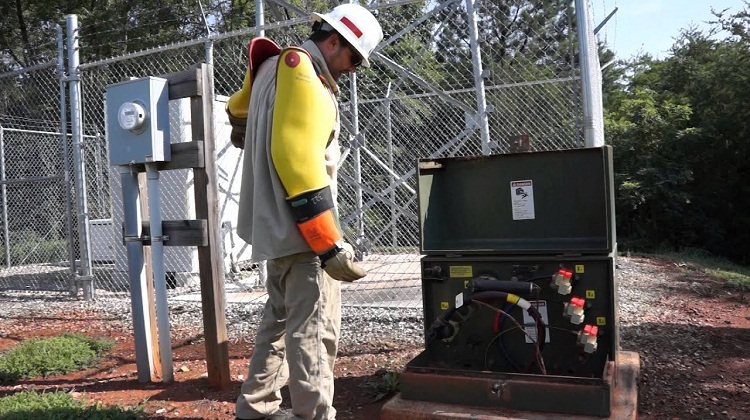Pad mount transformers are one of the most popular types of transformer and for good reason. They offer a lot of benefits, including easy installation, compatibility with a wide variety of vehicles, and a relatively low price tag. In this article, we’ll explore all that pad mount transformers have to offer!
What are pad mount transformers?
With so many electronic devices relying on transformer pads for power distribution, it can be difficult to understand what they are and what they do. In this article, we will provide a comprehensive overview of pad mount transformers, their anatomy, and why they’re so important in the industry.
Pad mount transformers are one of the most common types of electrical transformers found in electronics. They’re also one of the most versatile, as they can be used to provide power to a wide variety of devices, from small calculators to large monitors.
How do pad mount transformers work?
Pad mount transformers use a copper wire loop formation called a ‘stripline’ to transfer electrical energy from one block to another. To create this stripline loop, Padmount transformers use two coils – one on each side of the transformer’s metal backbone. These coils are connected by a ‘bridge’ or link wire, which sends current from the coil on one side of the transformer directly to the coil on the other side. As current flows through the bridge wire, it creates an electromagnetic field that pulls power from one coil and sends it through the link wire to the other coil – creating an activated pad on each end (see diagram below). This activated pad acts as a switch that turns electricity into emotional energy (aka “force”), which is then used to power your electronics!
Types of pad mount transformers
There are a few different types of pad mount transformers, and each one has its distinct benefits. Pad mount transformers are perfect for use with audio gear, specifically amplifiers, and speakers because they provide a compact and portable solution.
The most common type of pad mount transformer is the bi-amplified transformer (BTM). BTMs are designed to multiply the power output of an amplifier by two, providing more headroom for louder volumes. They’re also great for powering two speakers at once or feeding an amplifier into two separate speaker systems.
Pad mount transformers also come in tri-amplified forms (TAMs), which provide triple the power output of a BTM. This is perfect if you need to power three or more speakers simultaneously or if you want to feed an amplifier into three separate speaker systems.
If you’re looking for a more powerful solution, consider a pad mount transformer with variable gain. This type of transformer offers varying levels of amplification, so you can adjust it to match the power requirements of your audio gear. Plus, variable gain pads mount easily onto your equipment so you can always get powerful sound no matter where you are in your house.
What are the benefits of using pad mount transformers?
Pad mount transformers are a popular way to power electronic equipment in confined spaces. By using a transformer, the equipment can work even when it is not plugged into an outlet. Pad mount transformers come in many different shapes and sizes, so they can be used for a variety of applications. Here are some of the benefits of using pad mount transformers:
– They are less likely to damage equipment due to static electricity.
– They provide extra power when needed, without having to worry about other electronics occupying the outlet.
– Pad mount transformers can be positioned close to the equipment they’re powering, eliminating the need for cable runs.
What are the limitations of using pad mount transformers?
There are several limitations to using pad mount transformers:
-The transformer’s input and output capacities must be compatible. This is typically true, but there may be exceptions.
-The transformer must have a cooled output, as the heat generated by the amplifier will cause the transformer to overheat.
-The amplifier must have an input that can take the high voltage of a pad mount transformer. Many amplifiers do not have inputs capable of handling such high voltages, and therefore require a step-up or down converter.
How do I choose the best pad mount transformer for my needs?
Pad mount transformers are an essential component of any music production setup, and there are a variety of options to choose from. Here we’ll cover the basics of pad mount transformers and help you choose the best one for your needs.
What is a pad mount transformer?
A pad mount transformer is a device that attaches to a pedalboard and converts the signal output into a compatible format with your computer or audio interface. They come in different shapes and sizes, but all share one common feature: they allow you to connect your pedals directly to your computer or audio interface.
Why use a pad mount transformer?
There are several reasons why using a pad mount transformer can be advantageous:
– Padmount transformers make it easy to keep your pedalboard organized and tidy. By connecting your pedals directly to your computer, you can avoid having tower individual cables between them and the board. – Pad mounts also let you use larger pedals without worrying about them interfering with other equipment on your board. For example, if you’re using an overdrive or distortion pedal, using an amount will allow you to crank up the volume without fear of damaging other gear. – Finally, by converting the signal output from pads into USB or MIDI format, pad mounts can provide accurate performance when working with software instruments or sound synthesis plugins. This means no more missed notes due to inaccurate parameter mapping!
Conclusion
Thank you for reading our guide to understanding pad mount Transformers! In it, we discuss the different types of pad mount Transformers and provide an overview of their capabilities. We hope that this information has helped us understand how these transformers work and can sometimes be used in conjunction with other electronic devices. If you have any questions or comments, please feel free to drop us a comment below!



